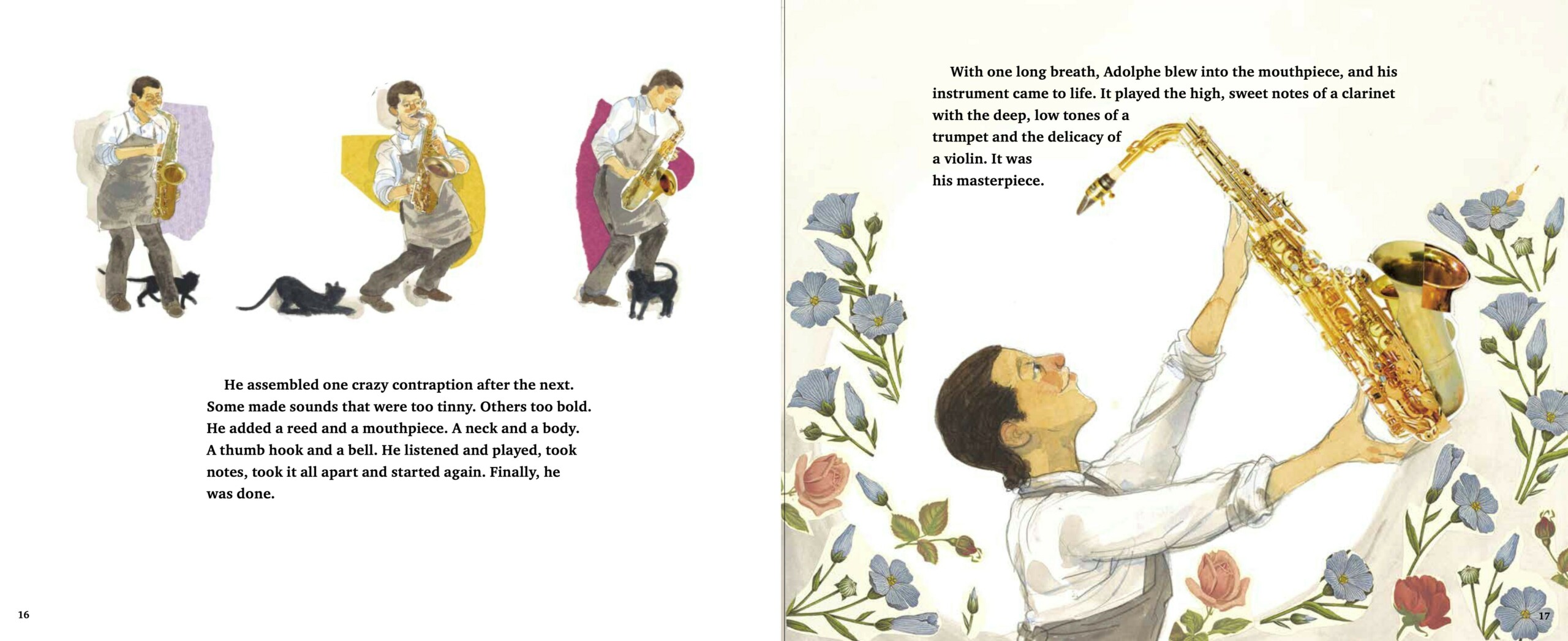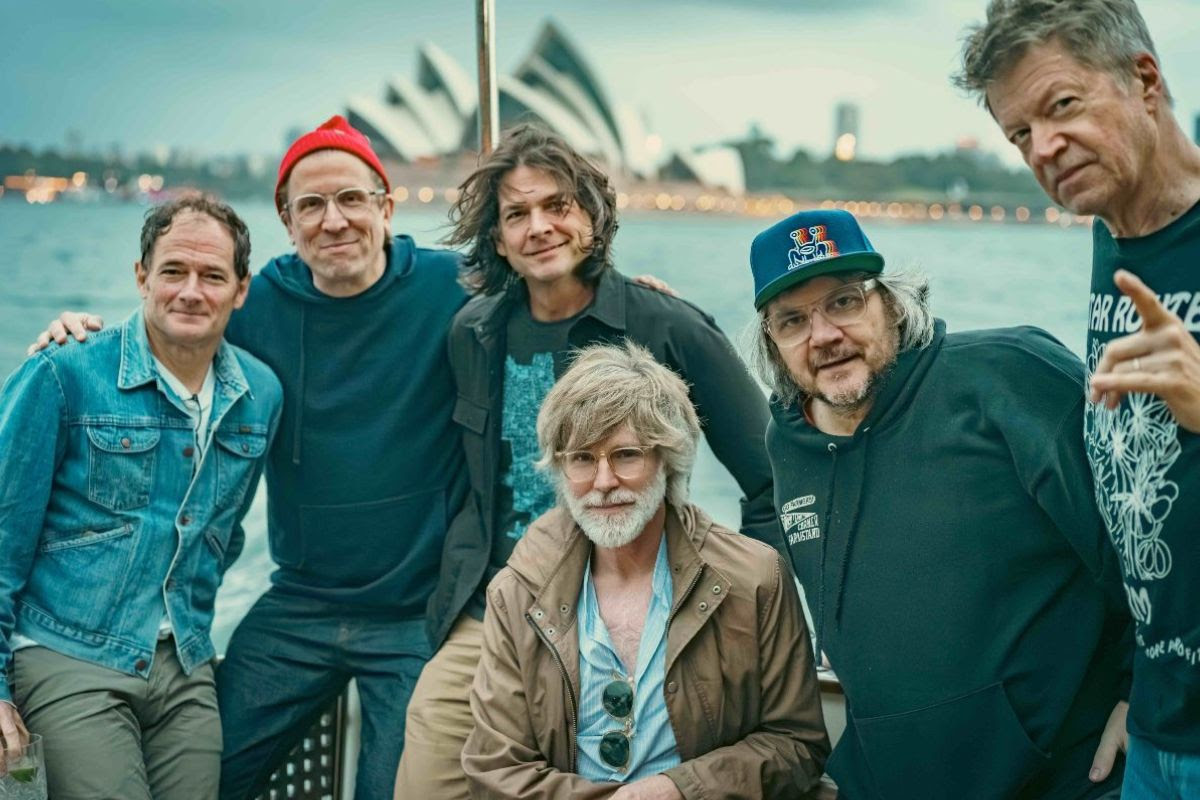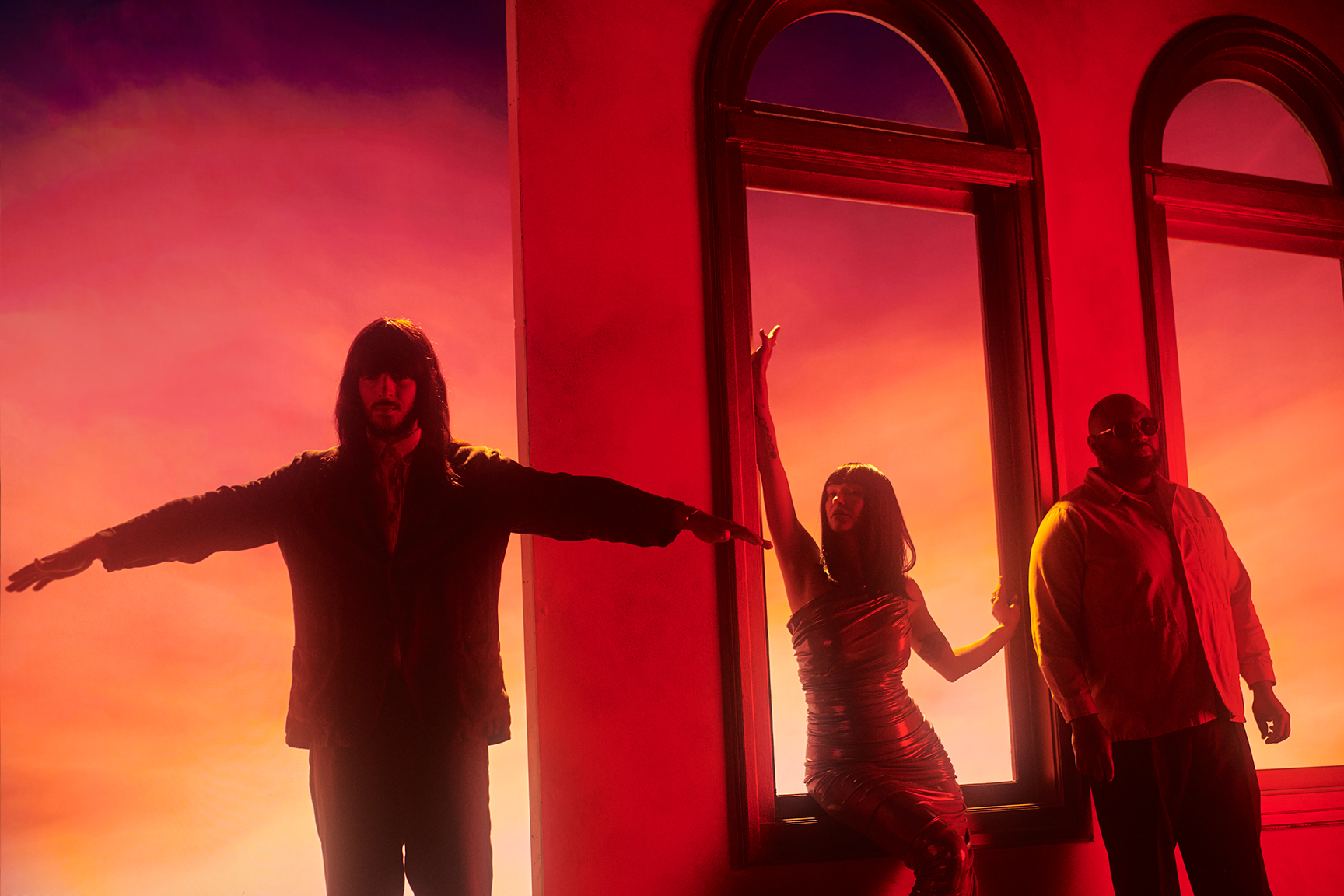
Lesa Cline-Ransome and James Ransome met at a “Purple Rain” party when they were 19 — sophomores at Pratt Institute.
“I asked her to dance, and we’ve been dancing together ever since,” says James Ransome.
Cline-Ransome was in the fashion department. Ransome was an illustration student. They began dating.
“I think we knew we were a match because he would help me with all of my art projects and I would help him with all of his writing assignments,” says Cline-Ransome. “And that’s kind of how we knew we would be together forever.”
They’ve now been married for 33 years. During that time, Lesa Cline-Ransome became an author and James Ransome, an illustrator. Together, they’ve now created multiple picture books including Before She Was Harriet, Overground Railroad, and Satchel Paige.
The Story of the Saxophone is their latest children’s book, inspired by a mutual love of jazz. The couple had just finished watching Jazz, the 2001 PBS documentary, and James Ransome had an idea. He knew that saxophonists like Coleman Hawkins and Lester Young were instrumental in helping the saxophone gain popularity in the jazz world.

“So I said, ‘This would be great to do a book about Coleman Hawkins and Lester Young, sort of a comparison about their sounds.'”
Cline-Ransome was interested, and started doing some research. “When I’m working on a book, I really need to be connected to the subject,” she says. And this time she wasn’t quite feeling it.
She decided to switch gears.
“One day I just asked myself this really simple question: Who invented the saxophone? And I found an incredible story.”

Antoine-Joseph “Adolphe” Sax lived in Dinant, Belgium in the 1800s. And he was often bored.
“So he daydreamed, especially when he should have been paying attention,” Cline-Ransome writes in the book. “By the time he was 10, he had fallen down a flight of stairs, swallowed a needle, been poisoned three times, nearly drowned, been burned by gunpowder, and been knocked into a coma from a loose roof tile.”
Adolphe also happened to be the son of an instrument maker. And he was very, very curious. As he tinkered in his father’s workshop, he ended up inventing several instruments: the steam organ, the sax tuba, the euphonium, the bass tuba, and the flugelhorn.
“But Adolphe was daydreaming of a new sound,” Cline-Ransome writes. “Not as loud as a trumpet. Not as soft as a clarinet. Somewhere right in the middle.”
Finally, he landed on his masterpiece: the saxophone.
“People often called it the Devil’s Horn,” says Cline-Ransome. “It was just too, you know, human-like and seductive and sexy.”
It was a hard sell at first, but Adolphe got the saxophone into every regimental band in Paris, then Prussia, Italy, Spain, and Hungary followed.
This was the story Cline-Ransome wanted to write: the story of how this Belgian instrument eventually ended up making its way to the Americas, where it was transformed by jazz musicians. It was even better than what James Ransome had expected. “I sort of pitch an idea and then she goes and knocks a home run,” he explains.
For the art, Ransome created black and white drawings with touches of watercolor. The colors are subtle, and the characters are slightly humorous, with big eyes and ruddy cheeks.
All of the saxophones in the book, of which there many, are collages — cut-outs of magazine pictures and photos of saxophones.
“I really wanted them to stand out,” says Ransome. “I wanted it to be that sort of dominant thing on the page that we sort of follow this like a bouncing ball going through the book.”
Cline-Ransome says that’s one reason why her husband is one of her favorite illustrators. “Using collage for the saxophone … it replicates the idea of this boy who pieced together this brand new instrument,” she explains. “And so it really does illustrate that.”
Even though Ransome came up with the original idea for the story, and even though they live in the same house, the married couple says they don’t work together while the book is being created. After the initial story generation, it can be as long as a year before Ransome starts illustrating the book.
“Lesa does not come in and comment on the pictures or say anything about them,” says Ransome.
“I’m incredibly impatient,” adds Cline-Ransome. “I’m always, ‘Where is this? Where’s the book? How long does it take?'”
Though she does love being surprised by the final images: “He creates worlds for young readers that I think are just magical.”

No spoilers, but the rest of Adolphe’s life was full of twists and turns, ups and downs. He died in 1894, but his saxophone lives on, as Cline-Ransome writes, “On street corners and in juke joints, at funerals and in jazz clubs.”
If readers learn one thing from the story of Adolphe Sax, Cline-Ransome says she hopes it is that they should always remain curious.
“Sometimes the ways in which we live and grow in this world … curiosity sometimes is the first thing that leaves us,” she says. “I think that sometimes kids in particular aren’t encouraged to ask and explore enough. And it was only through Antoine-Joseph “Adolphe” Sax’s curiosity that he made these discoveries.”
9(MDEwNzczMDA2MDEzNTg3ODA1MTAzZjYxNg004))
Transcript :
JAMES RANSOME: My name is James Ransome. I have illustrated 72 books.
LESA CLINE-RANSOME: My name is Lesa Cline-Ransome, and I am an author of about 25 picture books.
RANSOME: I’ve known Lesa since she was 19 years old. We met at Pratt Institute at a “Purple Rain” party. I asked her to dance, and we’ve been dancing together ever since.
CLINE-RANSOME: We knew we were a match because he would help me with all of my art projects, and I would help him with all of his writing assignments. And that’s kind of how we knew we would be together forever.
AYESHA RASCOE, HOST:
And indeed, Lesa Cline-Ransome and James Ransome have now been married for 33 years. They’ve had four children, now grown, and they’ve produced multiple picture books together, including “Before She Was Harriet,” “Overground Railroad” and “Satchel Paige.” The 2001 PBS documentary “Jazz,” which they watched together, helped inspire their latest children’s book. For our series of conversations between authors and illustrators, “Picture This,” we spoke with Lesa Cline-Ransome and James Ransome about “The Story Of The Saxophone.”
RANSOME: I grew up with my grandmother, but she was not playing jazz. Jazz was always this music that was around me, but it was always this sort of very sophisticated music that people usually had, you know, great taste. It was adult. And I didn’t feel comfortable. I did not know the history, did not know all these things about it. But watching and listening to the Ken Burns documentary helped catch me up. Now jazz is played in my studio all the time when I’m working.
CLINE-RANSOME: James and I have become somewhat jazz fans. I grew up in a – very much a jazz household with parents who were Depression-era huge jazz fans, and we were regular attendees at the Newport Jazz Festival. That’s our favorite place to go.
RANSOME: So I often get ideas for books. And from jazz history, I know that Coleman Hawkins and Lester Young were major contributors to the reason why the saxophone has developed in the jazz world in bands. So I said, Lesa, it would be great to do a book about Coleman Hawkins and Lester Young, a sort of a comparison about their sounds.
CLINE-RANSOME: So I started in on my research, as I always do – listening to music, doing some more reading. You know, when I’m working on a book, I really need to be connected to the subject that I’m writing about. I found that I couldn’t make the connection that I normally make. One day I just asked myself, like, this really simple question – who invented the saxophone? And I found an incredible story of Joseph Antoine “Adolphe” Sax (ph), a young man who lived in Dinant, Belgium, in the 1800s, who was the son of an instrument maker.
He was a child who was really always having difficult times. He was always – had a lot of bad luck in his life. I mean, by the time he was 10 years old, he had basically fallen down a flight of stairs and swallowed a needle. He’d been poisoned. He had almost drowned. He’d been burned by gunpowder. He was even in a coma for a period of time. But he was also an incredible inventor, and he was lucky to be in a workshop alongside his father, where his father let him experiment and tinker and tweak.
And so he wound up inventing several different instruments, which included the steam organ and the sax tuba and the euphonium, the bass tuba and the flugelhorn. But he was looking for a very specific sound when he happened upon creating the saxophone. His goal was to have this instrument highlighted as a feature instrument in military bands, which was a popular way to showcase instruments at the time. That’s how it gained popularity.
The real collaboration comes in the beginning when we’re talking about the project, and then I go off and I start my research and my writing.
RANSOME: Yeah. So I basically leave Lesa alone to write. I sort of pitch an idea, and then she goes and knocks a home run.
CLINE-RANSOME: Throughout that process, I will come in and share different various drafts with James.
RANSOME: Sometimes it’s a year or so before I get to the book, because remember, she can write much faster than I can illustrate.
CLINE-RANSOME: I’m always – where is this? Where’s the book? How long does it take?
RANSOME: I get the manuscript. I look it over and I just start – almost like working with a writer that I don’t know. Lesa does not come in and comment on the pictures or say anything about them. She doesn’t read it along and look at the pictures and anything. A year later, we’ll get proofs. And then probably a few months after that we get bound books. So that’s the project. It’s quite a long process.
CLINE-RANSOME: I love what he surprises me with when I walk into the studio and I discover, oh, and this is what he’s doing – oh, and this page. And you look, and each page, as you turn the page, you’re just drawn into this world. You’re in Belgium. You’re in Paris. You know, you’re in Mexico. You’re in New Orleans. And he creates worlds for young readers that I think are just magical.
RANSOME: I tried to make it a little on the humorous side, making people shorter or wider. So there’s exaggerations in body parts. But maybe I should step back and say, imagine black and white drawings with touches of watercolor and touches of collage. All the saxophones that you see in the interiors, I didn’t paint. Those are all collage pieces. So I just took pictures of saxophones. I cut them up, almost like a Picasso-type saxophone. I wanted it to be the sort of dominant thing on the page that we sort of follow, like a bouncing ball going through the book.
CLINE-RANSOME: What I love about what James did with the saxophone, which is why he’s one of my favorite illustrators – it replicates the idea of this boy who pieced together this brand new instrument. And so it really does illustrate that.
RANSOME: I never thought about that.
CLINE-RANSOME: Oh, really?
RANSOME: Yeah, I never thought about that.
CLINE-RANSOME: (Laughter).
It’s very shocking for people that the saxophone is an instrument that we really do associate with jazz. And here is this man in Belgium who really wanted an instrument that would sound great in regimental bands, which to me is kind of the opposite of jazz. And jazz musicians, and often Black jazz musicians, took this instrument, made it their own, and transformed music.
RANSOME: This is one where I suggested something, and what she brings back is always much, much better than I could ever imagine. You know, her storytelling is interesting, how she connects things, how she sort of finds a viewpoint about him being curious and how he always sort of got himself into trouble because he was curious. I think it’s just phenomenal writing. I mean, that’s what it’s all about.
CLINE-RANSOME: I think that’s what makes it so fun, you know, reading the book and sharing the book with – especially with young readers, even with adults, for them to discover that this instrument was invented so long ago by this very young man. I don’t know if he was even 20 years old when he invented the saxophone. And he invented it simply because he was curious. I think that sometimes the ways in which we live and grow in this world, especially with children, curiosity sometimes is the first thing that leaves us. I think that sometimes people, kids in particular, aren’t encouraged to ask and explore enough. And it was only through Joseph Antoine Sax’s curiosity that he made these discoveries. So I hope that they remember to remain curious about exploring and looking at the world.
RASCOE: That was Lesa Cline-Ransome and James Ransome talking about their children’s book, “The Story Of The Saxophone.” Our series, “Picture This,” is produced by Samantha Balaban. Transcript provided by NPR, Copyright NPR.

Mr. Al Pete and Notsucal Release Their Latest Collab, ‘G4.5’

Dinner Party, Tom Misch and More from the Neighborhood with Mr. Al Pete

An Ultra-Chill Playlist from the Latest Episode of Electro Lounge

Sing Out Loud Festival Returns With Hozier, Beabadoobee, Father John Misty, Vance Joy and More

Chicago Alt-Country Faves Wilco Return to St. Augustine with Indie-Folk Great Waxahatchee

Looking for an Alternative to Spotify? Consider Hopping on the band(camp) Wagon

Khruangbin to Bring ‘A LA SALA’ Tour to St. Augustine in April

Perfume Genius, Flipturn, Tamino + Mitski and 6 New Songs to Stream

Song of the Day | “all tied up” by Glixen




